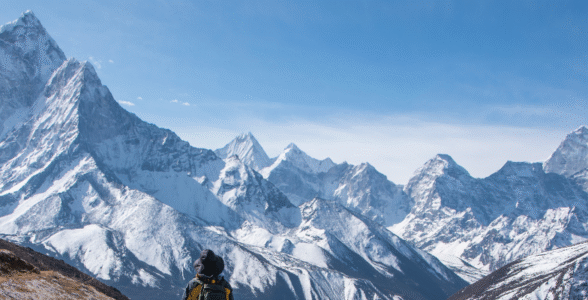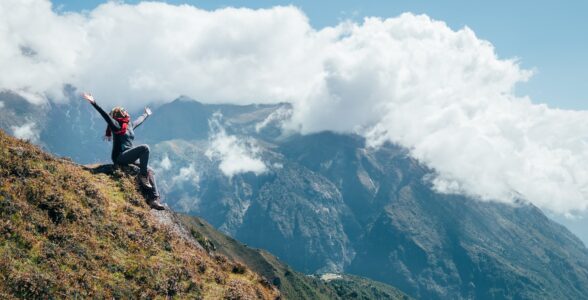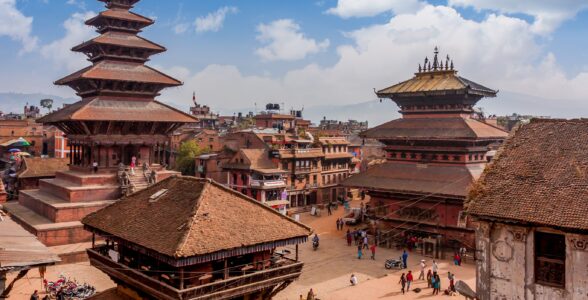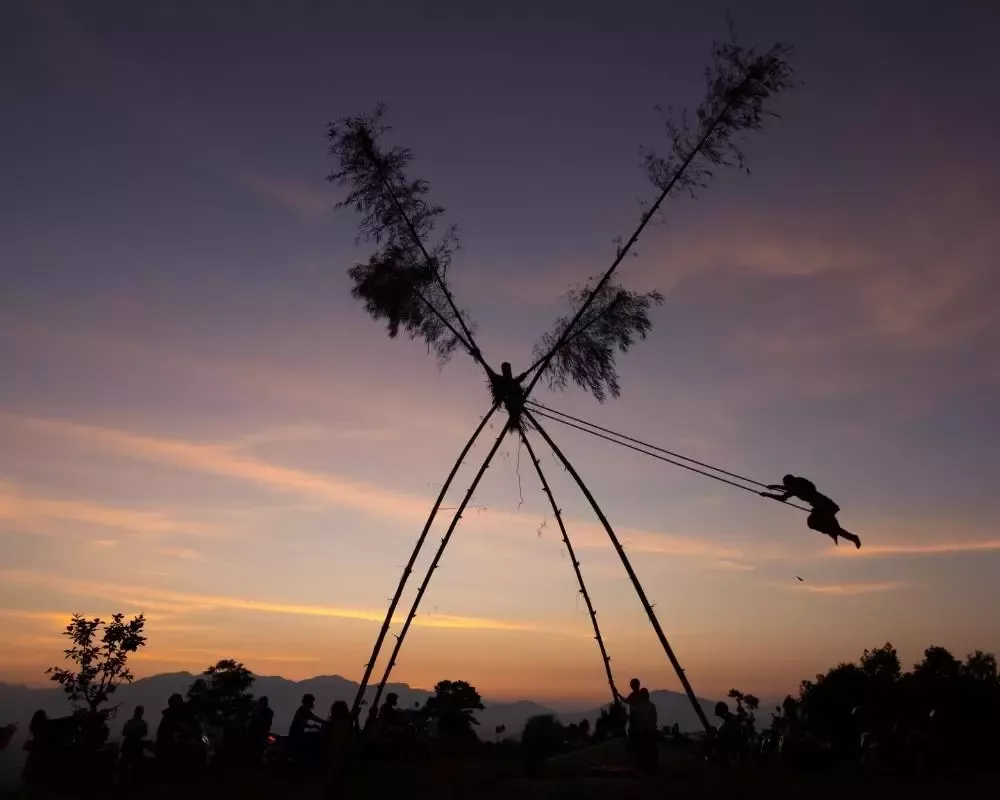
Dashain: The festival of victory, unity and blessings.
Activities Highlights
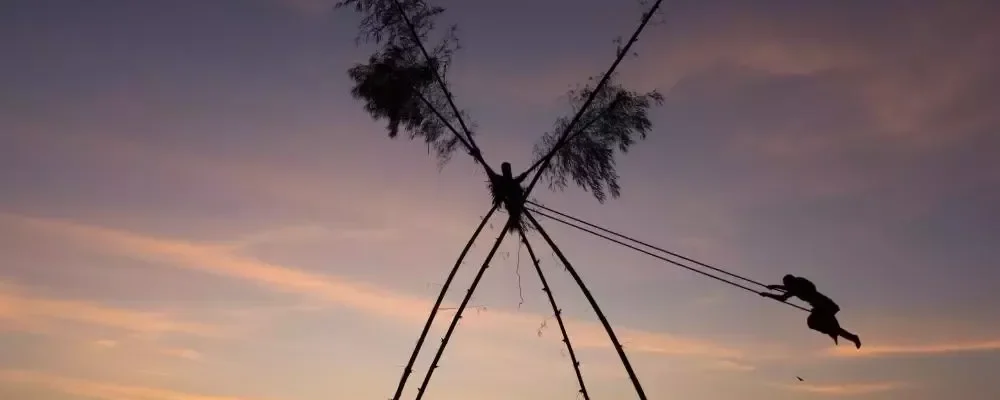
Among the most popular festivals in Nepal is Dashain or Vijaya Dashami. It is a period of celebration, family reunions, ceremonies as well as a celebration of the triumph over evil. Dashain is a 15 day festival celebrated on the day of the month of Ashwin (typically September or October) according to the Hindu lunar year, and is characterized by a number of rituals and festivals. The festival is an important event both to the Hindus and Buddhists and the manner in which it is observed among the two groups is different which reflects the religious diversity of Nepal.
The 15 Days of Dashain
Dashain is not only a one day festival but a 15 day journey full of traditions, rituals and prayers. We will discuss the key days of the festival below, and each of them has its meaning and traditions.
i. The Ghatasthapana (The Day of Initiation)
Ghatasthapana is the official start of the festival, and it takes place on the first day of Dashain. This is a very auspicious day and entails installation of a special pot (kalash) that is full of sacred water, rice and other offerings. It is used to place kalash in a new place of the house or temple and to pray to the Goddess Durga who is said to bring power, knowledge, and blessings to her followers.
During Ghadasthapana, a special soil bed with jamara (barley seeds) is sown and it produces small plants throughout the festival. The plants are regarded as the symbols of power and fortune. It is also the beginning of the navaratri (nine nights) of worship, of the nine forms of Goddess Durga. During the festival, the families come together to pray and make offerings to the goddess in order to have her protection and blessings.
ii. Fulpati (The Day of the Flowers and Fruits)
Fulpati is the seventh day of Dashain and it is a holiday devoted to celebrating the divine presence of the goddess. Fulpati is characterized by picking of flowers, fruits, and leaves of the woodland which are subsequently carried to the household of the king (or such an elder in other families who are respected) in a procession. This day marks the day of offering of the best of nature to the goddess.
The Kathmandu Fulpati is a festival that is celebrated with a lot of pomp and a magnificent procession is held with religious singing and symbolic displays of the goddess. The worshippers hold the belief that the goddess actually comes to the house on this day and individuals adorn their houses with the flowers and fruits. It is also a time to conduct certain rites such as the installation of the sacred jamara in the homes and temples.
iii. Astami (The Day of Sacrifice)
Dashain is celebrated on the eighth day known as Astami which is extremely important, particularly among the followers who practice the traditional sacrifices. Sacrificing animals like goats, buffaloes and chicken is done in different regions of Nepal on this day. These sacrifices are offered in a sacrifice to Goddess Durga in an attempt to have her blessings on winning against evil and bad luck.
In certain parts of Nepal, the day also entails the taking of Tika (yogurt, vermillion powder and rice mixed) by the elders towards members of the family, which symbolizes their blessing. There is also the ritual of worshipping weapons (tools, farming equipments and vehicles), whilst on Astami. The goddess is believed to have her force in these objects which guarantee protection and provide prosperity.
iv. Nawami (The Day of Triumph)
On the ninth day, Nawami, it is the victory of the good against the evil. On this day, followers use the Nawami Puja in which they pray to goddess Durga to protect and bring good fortune. In other families, Tika and Jamara are offered on Nawami to the children, a practice this day still continues. This day is a celebration of the triumph of the goddess over a demon by the name Mahishasura, which represents the power of the righteousness.
The day of family reunions is also Nawami. The extended family gathers to mark the completion of the nine days of worship and to make preparations to the big Dashami ceremonies on the day after that. To most people, it marks the climax of the fasting and prayers; hence the expectation of being blessed by elders.
v. Dashami (The Day of Blessings)
Lastly, there is Dashami, which is the most important day of Dashain, that falls on the 10 th day. This is the day of getting the Tika and Jamara conferred by elderly people. The Tika, a mixture of yogurt, rice and vermillion, is smeared on the forehead and Jamara (barley sprouts) is smeared on the head as a symbol of the divine blessings.
Dashami is the period that families pay honor to their forefathers, hoping that they will give them good wishes of a good year to come. The older members of the family congratulate the young family members, and presents, including money, clothes, and food are given. Receiving blessings and gifting is a symbol of family unity, respect and thanksgiving. When blessed, most individuals go out to greet friends and family members which enhances social relationships.
Diversity of celebrations: Hindus versus Buddhists.
Dashain is a Hindu festival, however, it is also popular among Buddhists in Nepal especially the Newar Buddhists. Both parties pay respect to Goddess Durga and perform almost the same rituals but their cultural activities are somewhat different because of their distinctive religious norms and traditions.
Dashain is celebrated by Hindus in a great manner with major focus on worship of Goddess Durga who is assumed to have triumphed over the evil called Mahishasura. The festival is very strong in the Hindu mythology and the main emphasis is on the triumph of good over evil and blessings of the family elders. The rituals are also closely related to the ritualistic worship of Durga and her numerous incarnations.
The Buddhists especially the Newar community also worship the goddess during Dashain though they include their rituals. To them, the festival is a family affair, a respect to the elderly and an animal sacrifice is not a priority. The Buddhist Newars usually mix the Dashain ceremonies with their local ceremonies like Sakchya (praying to the ancestors), offering at the monasteries. The Dashain festival in certain regions of Nepal is not about the overkill of a demon; but it is an ode to karma and reincarnation.
Nevertheless, family, respect of the elders and prayers to good health and prosperity remain the common factor in both the Hindu and the Buddhist Dashain celebrations.
Traveling tips to Nepal during Dashain
Going to Nepal on the occasion of Dashain is a wonderful and special experience, yet it is important to prepare beforehand so that you can have the best time ever. Dashain is one of the major and the biggest festivals in the country and it presents both chances and threats to the travelers. In both the capital cities and in the country hinterlands, here are some things that can assist people in navigating Nepal during this festive season.
i. Reserve Your Place to stay and Transport
This is a period when a large number of individuals visit their family homes particularly to reunite with their relatives on this period, Dashain. This implies that hotels and transportation will be reserved fast. To avoid last-minute hassles:
Make your reservations early especially in tourist destinations such as Kathmandu, Pokhara and Chitwan.
Book flights and buses in advance, because domestic transportation is usually busy, and the time may shift because of the festival.
During Dashain, one can expect to spend a considerable amount of time on the road and the fact that the roads are busy and the weather conditions or the festivals might affect the flight schedule.
ii. Ready to serve limited services.
Although Dashain is a festival of happiness, there are numerous businesses and governmental offices that close up to several days. You may experience:
The closed shops and restaurants particularly on the key festival days such as Dashami and Astami.
Scarcity of public transport on the highest days of the festival.
Some of the tourist attractions will be limited to tourists because in most cases, the locals will be occupied with family events and worship.
iii. To ensure that the journey is smooth
Prep some of the basic necessities such as food, water, toiletries, before the holiday rush begins.
You will have to be patient when you encounter delays in service or communication as most locals go on holiday to see their families or have a party.
iv. Accept the Cultural Ambience
Dashain is also an amazing event to experience and be part of Nepal and her culture. During the festival:
There are colorful marches, ancient dances and temple ceremonies, notably in such cities as Kathmandu and Bhaktapur.
There will be conferences and worship services that are going to take place in the family. When you are welcomed to a home locally, then you have a great opportunity of getting to know the festival with your own eyes.
Show politeness and consideration to local traditions particularly in rituals. When you are in a puja (prayer ceremony) or have been given Tika by the elders, then you should respect and know it is a serious cultural ritual.
v. Learn the Religious Diversity.
As stated, the observing of Dashain is carried out by the Hindus and Buddhists in Nepal, although the mode of celebrating it may vary:
Hindus pay much attention to worship the goddess Durga, the triumph over the evil, and get blessings with the help of Tika and Jamara.
Buddhists, in particular Newar Buddhists tend to lay stress on family reunions, and local rituals and less stress on animal sacrifices.
Be tolerant of differences in religious practices and be ready to learn about the local practices.



